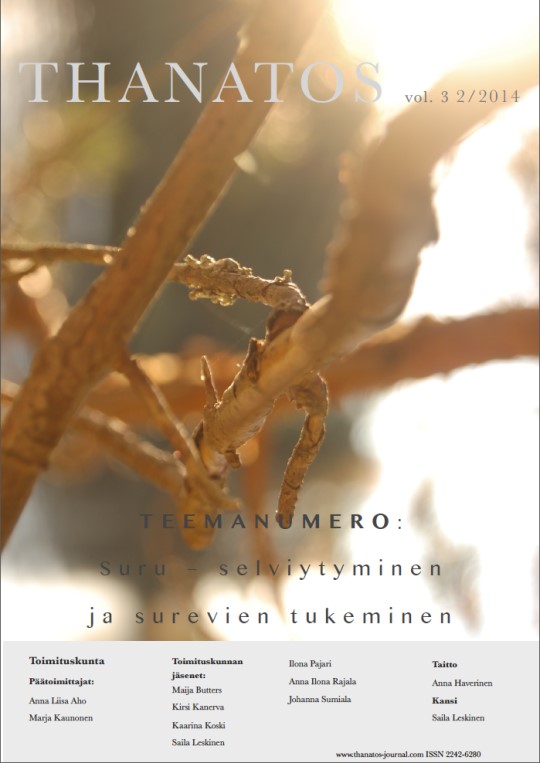Monuments for stillborn children: Coming to terms with the sorrow, regrets and anger
Abstrakti
In the Netherlands, until the years mid eighty of the previous century, health care professionals like doctors, midwives and nurses determined routines around birth. As a consequence and according to the protocols at the time, stillborn children were immediately taken away after birth. Parents most often did not get a chance, nor were they allowed seeing their child. Roman Catholic rules dictated that stillborn children who had not been baptized would be buried anonymously in hideaway and in the unconsecrated grounds of the graveyard. Doctors and nurses were taught during their training that it was best not induce emotions by acquainting the parents with their stillborn child because it would be more difficult for them to handle their loss once they had become attached, seen and held, their child. Parents were not openly allowed to grieve and they were almost forced to deny and ignore their stillborn child as if it had not existed at all.
The focus of this (qualitative) research in the field of ritual studies was on parents who have kept for a long time commemoration of their stillborn child within a private context. With the emergence as of 2001 of monuments to stillborn children (in the Netherlands at the moment more than 160), these parents have the opportunity to enact commemoration rituals in honour of their stillborn child and to share their individual memories with a wider audience. The purpose of the research was to study how collective and individual commemoration rituals enacted by parents at the site of a monument create meaning in coming to terms with the, often long time ago, loss of a stillborn child.
According to ritual specialist Ronald Grimes rituals both do and mean something: they ‘work’ by making meaning. The results of this qualitative research show that parents of stillborn children benefit from a public place of commemoration and they finally seem to come to terms with the loss of their stillborn children and with the disrespectful way in which others handled their child at the time of their stillbirth.
Tiedostolataukset
Julkaistu
Numero
Osasto
Lisenssi
Copyright (c) 2023 Laurie M. C. Faro

Tämä työ on lisensoitu Creative Commons Nimeä-EiKaupallinen-EiMuutoksia 4.0 Kansainvälinen Julkinen -lisenssillä.





